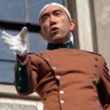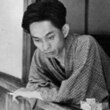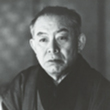The beggar student
Description
More Details
081123858
Also in this Series
Published Reviews
Booklist Review
Japanese author Dazai, born Tsushima Shūji, often used his own troubled life as inspiration for his fiction, repeatedly sharing his pseudonymous moniker with his characters. Dazai is again the protagonist here and a pen name, as the novella's Dazai, revealing his "incredibly embarrassing" birth name, explains. Dazai "makes [him] sound like a streetfighter who might break your neck." When this story was originally published in 1941, the author and protagonist were both 32-year-old struggling writers. Here International Booker Prize shortlisted translator Bett sublimely provides anglophone access. Fictional Dazai has just "sent a truly awful piece of writing to a magazine in order to survive." While avoiding going home, he walks along the Tamagawa Canal (where real-life Dazai's fifth suicide attempt will succeed in 1948) and encounters a high-school student turned one-day dropout. Age differences aside, the pair seem to revel in unlikely conversations--at turns adversarial, agitated, comical--that lead to "not a care in the world" youthful adventures. But then, Dazai can be such an unreliable narrator. Dazai aficionados will recognize parallels with the posthumously published, now-classic novel, No Longer Human.
Booklist Reviews
Japanese author Dazai, born Tsushima Shuji, often used his own troubled life as inspiration for his fiction, repeatedly sharing his pseudonymous moniker with his characters. Dazai is again the protagonist here and a pen name, as the novella's Dazai, revealing his "incredibly embarrassing" birth name, explains. Dazai "makes [him] sound like a streetfighter who might break your neck." When this story was originally published in 1941, the author and protagonist were both 32-year-old struggling writers. Here International Booker Prize shortlisted translator Bett sublimely provides anglophone access. Fictional Dazai has just "sent a truly awful piece of writing to a magazine in order to survive." While avoiding going home, he walks along the Tamagawa Canal (where real-life Dazai's fifth suicide attempt will succeed in 1948) and encounters a high-school student turned one-day dropout. Age differences aside, the pair seem to revel in unlikely conversations—at turns adversarial, agitated, comical—that lead to "not a care in the world" youthful adventures. But then, Dazai can be such an unreliable narrator. Dazai aficionados will recognize parallels with the posthumously published, now-classic novel, No Longer Human. Copyright 2024 Booklist Reviews.
































